Refranes Famélicos [de
Colombia]


Colombia]

[from Colombia]

Have you ever heard the expression: “To cry over spilled milk”? Somewhere, in our quest for understanding of the link between language and culture, sit those linguistic expressions, idioms, sayings, and phrases that can only be decoded correctly by particular groups of people.
Hungry Sayings [from Colombia] explores the intricate relationship between vernacular language, local culture, and bilingualism, aiming to question the agency of graphic communication design in the mobility of language across cultures. It focuses on translating traditional Colombian sayings bridging the lexical gaps between local expressions from my mother tongue, Spanish and my everyday language, English.
*
¿Alguna vez has escuchado la expresión: “No llorar sobre la leche derramada”? En algún lugar en nuestra búsqueda por entender el vínculo entre el lenguaje y la cultura, se encuentran esas expresiones lingüísticas, modismos, refranes y frases que solo pueden ser decodificados correctamente por grupos particulares de personas.
Hungry Sayings [de Colombia] explora la intrincada relación entre el lenguaje vernáculo, la cultura local y el bilingüismo, con el objetivo de cuestionar la agencia del diseño de comunicación gráfica en la movilidad del lenguaje entre culturas. Se enfoca en traducir refranes tradicionales colombianos, estableciendo puentes léxicos entre expresiones locales de mi lengua materna, el español, y mi lengua cotidiana, el inglés.
Introduction to “Between sayings and proverbs... foods, meals, liquors and breads travel.” by Teresita Alzate Yepes.
Introducción a “Entre dichos y refranes... transitan alimentos y comidas, los licores y los panes” por Teresita Alzate Yepes.
Alzate Yepes, T. (2009) ‘RASTREANDO Entre dichos y refranes...transitan alimentos y comidas, los licores y los panes’, Perspectivas En Nutrición Humana, 11(2), pp. 213–216. doi:10.17533/udea.penh.
“The linguistic richness of our language (Spanish) is evident in the multiple wordplays, double meanings, literary figures, and the many sayings, rhymes, and popular expressions that are passed down verbally from generation to generation. Those with ancestral memory, especially those who enjoy a rich oral tradition, say that this is the lifeblood of the people, as its proclamation of history illuminates the future.
Although this may have been true in the past, it gradually loses validity due to the much-vaunted globalisation, as the local connotations of certain expressions are lost as the internationalisation of food, ingredients, and meals leads to very similar diets, although the ways of appropriation, use, and relationship may vary in different contexts. Nevertheless, because eating is a mandatory and daily act, it lends itself to multiple manipulations and interpretations, some more serious and profound, others more comical or trivial, but undoubtedly, change also generates trans-formations in the ways we relate to food.”
(Alzate Yepes, 2009) *
“La riqueza lingüística de nuestro idioma (Español) está evidenciada en los múltiples juegos de palabras, en los dobles sentidos, en las figuras literarias y en los muchos refranes, retahílas y dichos populares que pasan de modo verbal de generación en generación. Dicen los que tienen memoria ancestral, y sobre todo aquellos que gozan de rica tradición oral, que ésta es la savia nutricia de la vida de los pueblos, pues su pregón de historia ilumina el futuro.
Aunque esto pudo ser cierto en el pasado deja de tener validez poco a poco a causa de la muy cacareada globalización, ya que las connotaciones locales de determinadas expresiones se van perdiendo a medida que la internacionalización de alimentos, ingredientes y comidas hace que tengamos una alimentación muy similar, aunque las maneras de apropiación, uso y relación pueden ser diferentes en distintos contextos. De todos modos, por ser la alimentación un acto obligatorio y cotidiano da pie a múltiples manejos e interpretaciones, unos más serios y profundos, otros más cómicos o triviales, pero sin duda, el cambio genera transformaciones también en las maneras de relacionarnos a partir de los alimentos.” (Alzate Yepes, 2009)
[de Colombia]
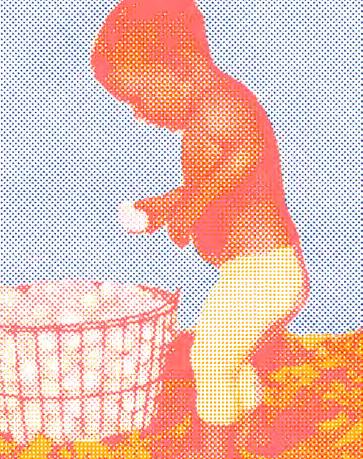
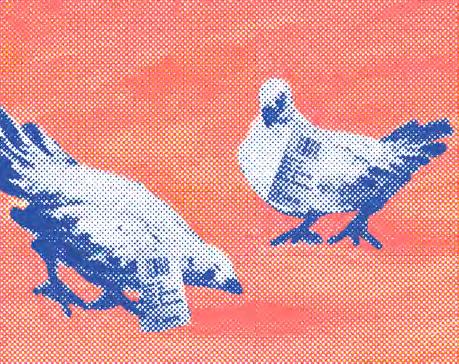
02 – [Chicken brand] – Referring to an unknown brand or one of dubious reputation.
01 – [White it is, hen lays it, it’s eaten fried] It’s said when pointing out something extremely obvious.
Blanco es, gallina lo pone, frito se come
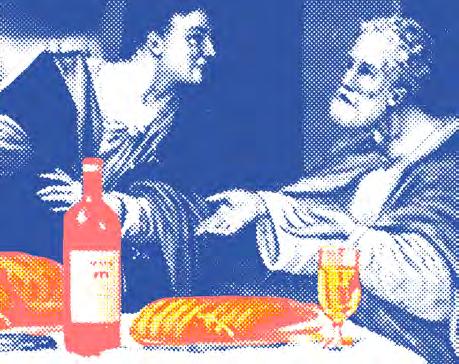
03 – [Bread is bread, and wine is wine] – To speak candidly, saying things plainly and without beating around the bush.
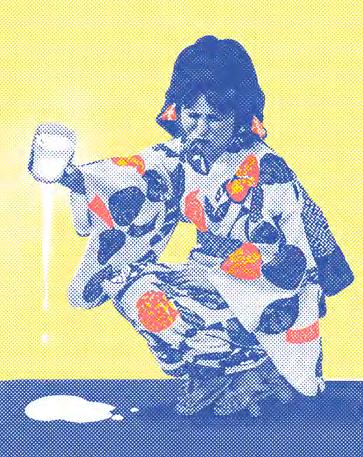
04 – [Cry over spilled milk] - To lament things that can no longer be remedied or repaired.

05 – [To be fried] – To be in a difficult or compromising situation with no possibility of getting out of it.
Estar frito
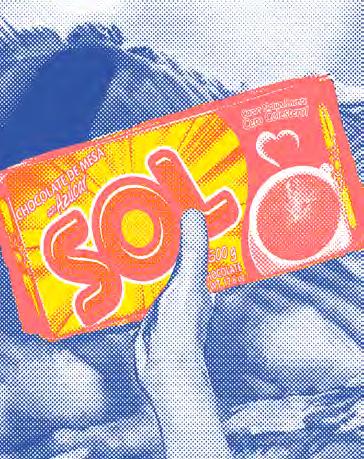
07 – [A ‘Chocolate Sol’ Day] – To have a hectic, challenging day with plenty to do.
Un día chocolate sol
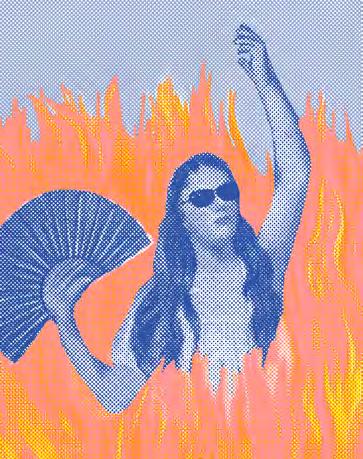
06 – [Sanchochando] – An expression of experiencing intense heat.
“It an average holiday, and we had travelled to a different city to visit my grandma. She didn’t have a swimming pool, and I wish she did because the heat that year was unbearable. She didn’t have air conditioned either, so at the peak of the day I would often hear someone saying wholeheartedly: “me estoy sancochando!”. That’s right, “sancochando” as in the sense of being boiled alive in that thick South American soup (Also know as Sancocho) made of meat, potato and assorted vegetables.”
(Prentice, 2024)
*
“Eran unas vacaciones como cualquier otras, nos dirigíamos a una ciudad diferente a visitar a mi abuela. Ella no tenía piscina, y desearía que la tuviera porque el calor ese año era insoportable. Tampoco tenía aire acondicionado, así que en el punto más álgido del día, a menudo escuchaba a alguien decir agitadamente: “me estoy sancochando!”. Así es, “sancochando” en el sentido de hervirse vivo en esa espesa sopa sudamericana (también conocida como Sancocho Antioqueño) hecha de carne, papa y otras verduras.”
(Prentice, 2024)
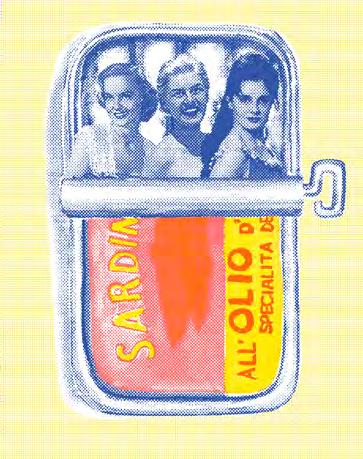
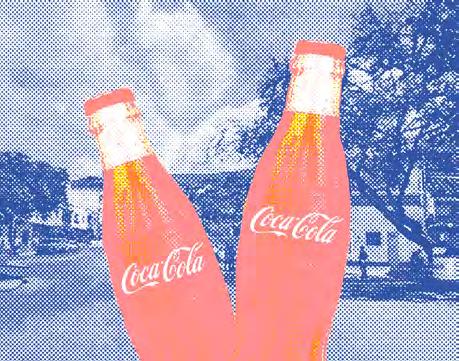
09 – [Dancing Coca Cola] – A type of youth dance party typical of the 70-80s where no alcohol was served, and Colombian minors went to dance just for fun.
Coca Cola bailable
08 – [Sardine] – Term to refer to a teenager girl or young woman.
Sardina
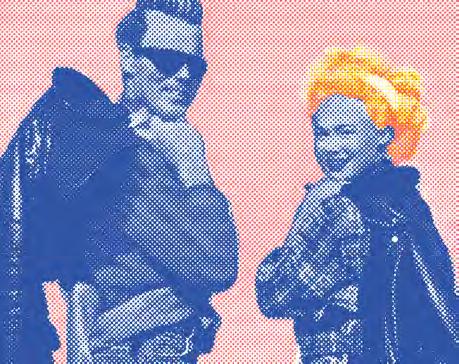
10 – [Cocacolo] – Young person from the 80s
“The first rebellious criollo kids without a cause were the sons of wealthy parents, known back then as ‘cocacolos.’ They would sneak out the family car without permission and try to emulate their hero, James Dean. Their attire
consisted of American blue jeans, brightly coloured jumpers, moccasin shoes, white socks, leather bomber jackets, dark sunglasses, crew-cut hairstyles, the same as American military personnel. With them, the first youth gangs were born, alarming the puritanical society of the so-called ‘South American Athens.’” (Hozzman, 2012)
*
“Los primeros rebeldes sin causa criollos fueron los hijos de papi, conocidos entonces como ‘cocacolos’. Sacaban sin permiso el carro de la familia e intentaban emular a su héroe, James Dean. Sus atuendos eran bluejeans americanos, suéteres de colores vivos, zapatos mocasines, medias blancas, chaquetillas toreras de cuero, gafas de lentes oscuros, corte de pelo cepillo, el mismo de los militares americanos. Con ellos nacieron las primeras pandillas juveniles que alarmaban a la puritana sociedad de la llamada «Atenas suramericana».”
(Hozzman, 2012)

11 – [The apple of discord] – Something or someone that causes conflict or disagreement among people.
La manzana de la discordia
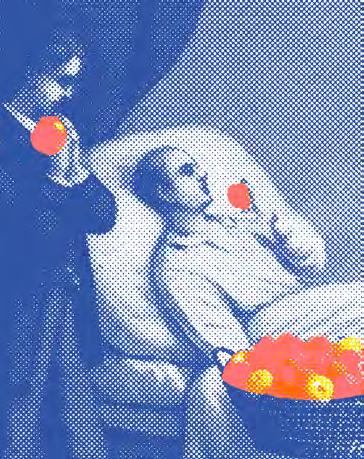
13 – [Next to the ill eats the healthy] –To take advantage of an opportunity for one’s own benefit, even to the detriment of others.

12 – [Crazy cow] – A situation that’s difficult to handle or has completely gone out of control.
La vacaloca

14 – [Enguayabado] – En-gwah-yah-bah-doh.
The physical and mental discomfort experienced after a night of excessive drinking, or simply put, a hangover.
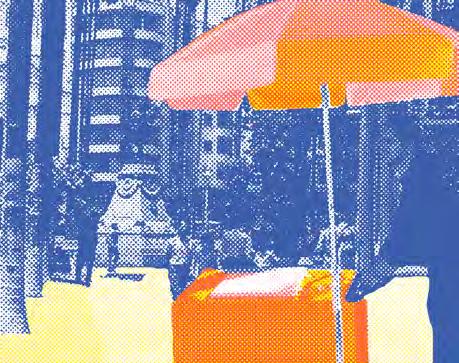
15 – [Jingle, jingle, but no ice lollies] – Conveys a sense of dissatisfaction when something promised or expected doesn’t materialise.
Tilin tilin y nada de paletas
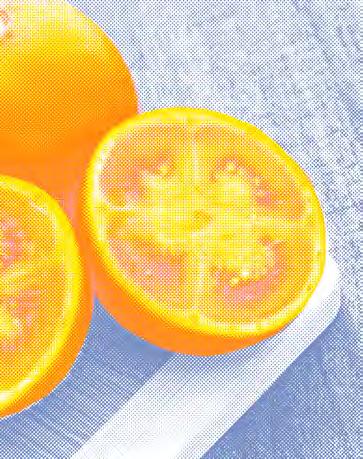
17 – [To be like a lulo ‘Solanum quitoense] To be really pretty and well situated in life.
Estar como un lulo
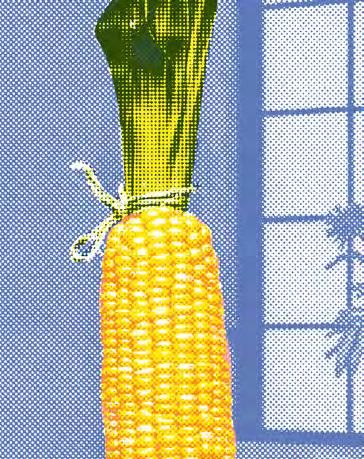
16 – [To be like corn on the cob] – To have some allergy or skin rash.
Está como una mazorca

18 – [To be salty] – To have bad luck.
Estar salado
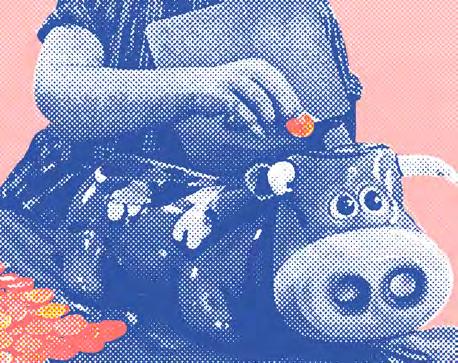
19 – [Make cow] – Hacer vaca
“We were young. We didn’t have much money and were careless. One of the guys from my block of flats would bring the guitar out and we would all sit in a circle outside the gym to sing breakup songs.

20 – [Fresh as a lettuce] – A person who is carefree and full of energy.
Fresco como una lechuga
Some other friend would make a call to “Make cow”, understood as the act of gathering coins, bank notes, whatever cash was available from each one of us to go and buy something, in this case the forbidden liquid… and a loaf of bread – to prevent our parents finding out we had been drinking.” (Prentice, 2024)
*
“Éramos jóvenes. No teníamos mucho dinero y éramos descuidados. Uno de los muchachos de mi conjunto sacaba la guitarra y todos nos sentábamos en círculo afuera del gimnasio para cantar canciones de despech.o. Mientras tanto, otro amigo empezaba a “Hacer la vaca”, procediendo a reunir monedas, billetes, cualquier efectivo disponible de cada uno de nosotros para ir a comprar el líquido prohibido... y un pan para evitar que nuestros padres descubrieran que habíamos estado bebiendo.” (Prentice, 2024)
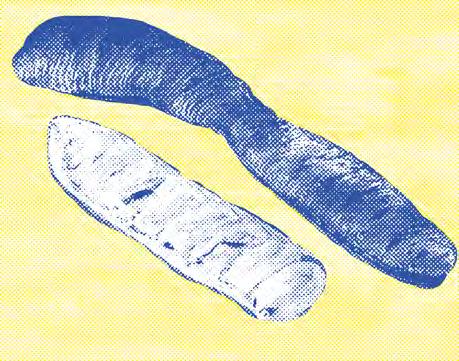
21 – [Left like a guama seed] – To leave a place quickly and abruptly, as when a guama fruit (Inga edulis) is opened, due to its texture, the internal seed can slip or be ejected.
Salió como pepa de guama

[1952 - 1990]
“Molinari Graphics was a popular print workshop founded in 1952 by the Spanish Antonio Molinari in Cali, Colombia. From its inception until 1990, the company reproduced religious, mythological, gender, portrait, entertainment, still life, and landscape images through chromolithographs, a printing technique that allows vivid and unusual colours. Its mass production, widespread distribution, and low cost made them popular objects that are part of collective memory.“ (Museo La Tertulia 2022)
The existance of this workshop in itself is an act of cross-cultural communication between Europe and Latin America. As Molinari himself embarks in a quest to shape and by shaped by the local culture through the printed image. The contents of this archive form the foundation of this body of work, as a reframed context comes to light by interveening, suberting and reimagining the image as a tool from cross-cultural communication in the 21st century.
*
“Gráficas Molinari fue un taller de impresión popular fundado en 1952 por el español Antonio Molinari en Cali, Colombia. Desde sus inicios hasta 1990, la empresa reprodujo imágenes religiosas, mitológicas, de género, retratos, entretenimiento, naturalezas muertas y paisajes a través de cromolitografías, una técnica de impresión que permite colores vivos e inusuales. Su producción en masa, distribución generalizada y bajo costo las convirtieron en objetos populares que forman parte de la memoria colectiva.” (Museo La Tertulia 2022)
“La existencia de este taller en sí mismo es un acto de comunicación intercultural entre Europa y América Latina. Cuando Molinari mismo se embarca en la búsqueda de dar forma y ser moldeado por la cultura local a través de la imagen impresa. El contenido de este archivo constituye la base de este cuerpo de trabajo, ya que al ser recontextualizado sale a la luz mediante la intervención, subversión y reimaginación de la imagen como una herramienta de comunicación intercultural en el siglo XXI.”
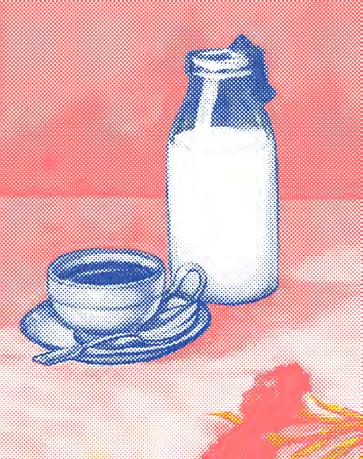
22 – [To pretend to be a coffee with milk] –To be pretentious, vain, arrogant, boastful.
Se las da de cafe con leche
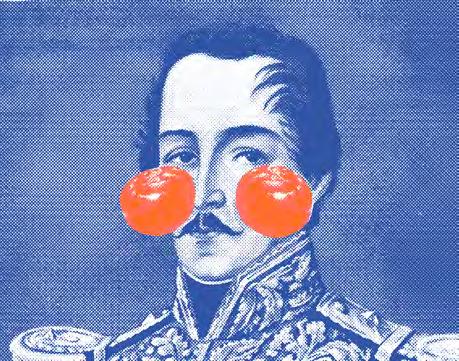
23 – [Red as a tomato] – To blush. When someone’s face turns red due to embarrassment, anger, or shame.
Se puso rojo como un tomate

24 – [To give papaya] – To make yourself an easy target for trouble or theft.

25 – [To uncover the cake] - To discover a big secret.
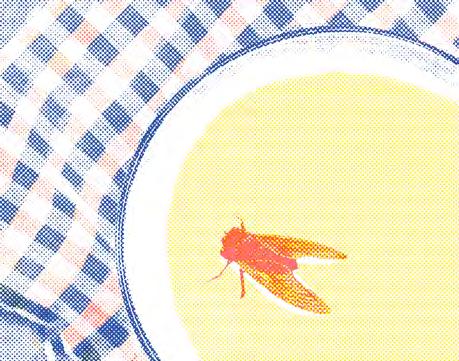
26 – [Fly in the milk] – To feel out of place among others.
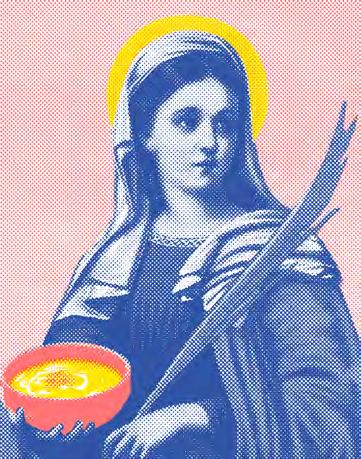
28 – [A resurrection broth] – Hangover broth, typically after excessive consumption of alcoholic drinks.
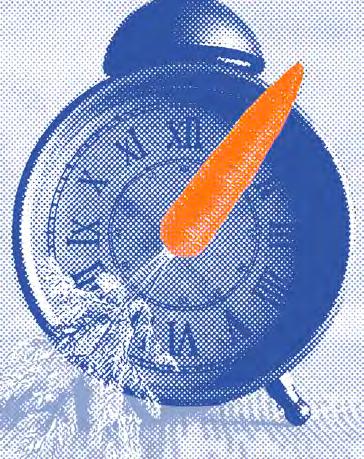
27 – [Carrot hour] – A law established in 1995 that restricted the sale of alcoholic beverages in Bogota from 1am.
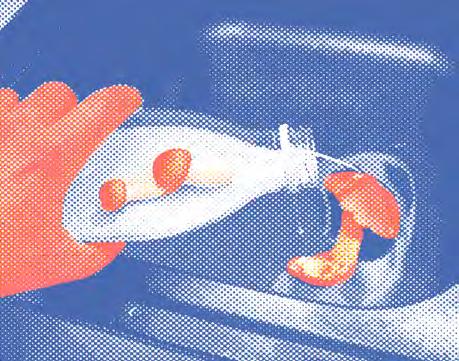
29 – [To be bad milk] – Is said of someone who is grumpy, pessimistic, or gives a bad omen.

30 – [Catfish] – An ugly person. Particularly if referring to an old woman.
Un bagre
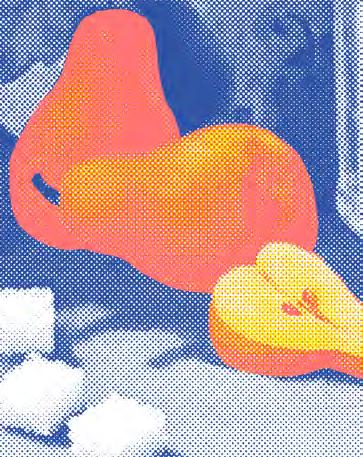
32 – [A pear in syrup] - A difficult person that’s quick to anger, rather than benevolent and affectionate.
Una pera en dulce
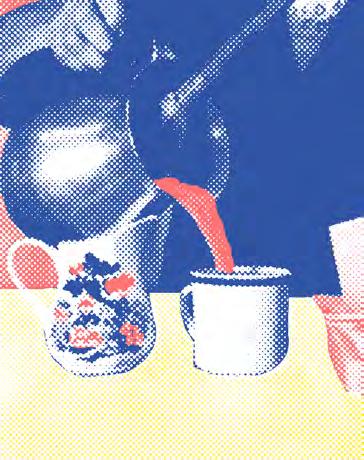
31 – [Clear dealings, tick chocolate] It implies a desire for honesty and clarity in communication or dealings.
Cuentas claras chocolate espeso

33 – [To want bread and a piece] – To have or enjoy two desirable things that are mutually exclusive or contradictory.
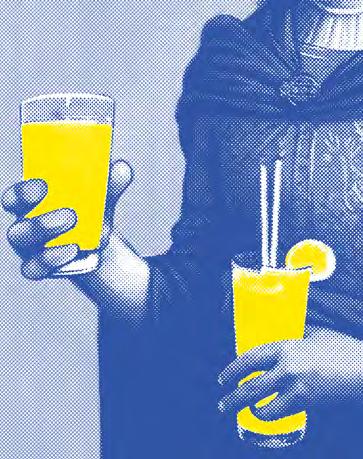
34 – [Neither ‘chicha’ nor lemonade] – Not easily conforming to categorisation (nor this or that).
“According to the Muisca legend, chicha was discovered by an indigenous woman who, desperate because of the punishment she received for being unfaithful to her husband, fled to Lake Guatavita, finding solace only in the fermented corn drink she found on the shores of the pond.” (Hernández Abello, 2019)
*
Ni chicha, ni limonada
“Según la leyenda muisca, la chicha fue un descubrimiento de una mujer indígena que, desesperada por el castigo que recibió al serle infiel a su marido, huyó a la laguna Guatavita teniendo como único consuelo el fermento del maíz que encontró en las laderas del estanque.”
(Hernández Abello, 2019)

35 – [Rice in low fire] – Keeping a relationship informal, avoiding commitment.
Arrocito en bajo
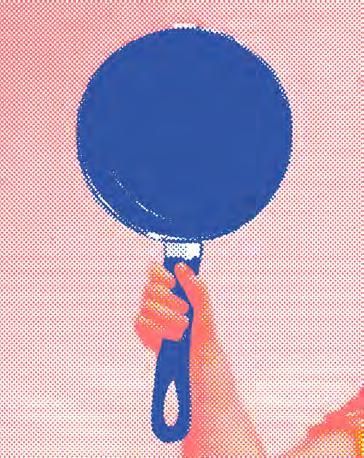
36 – [To grab the pan by the handle] – Taking decisive action and assuming control of a situation.
Cojer la sartén por el mango

[The medium is the message]
“It could be argued that at some point in their lives, all Colombians have consumed a Jet chocolate bar or, at the very least, have collected the sticker album that has accompanied it throughout its history. Indeed, the brand created in 1962 was born with characteristics that set it apart from other chocolate bars. Why?
The chocolate bar was born with its characteristic flavor and with collectible stickers, which had a strong impact on children. –Explains Conrado Mora Velásquez, quality manager of the National Chocolate Company.” (Arango, 2016)
In this way, the Jet Natural History Album presents an opportunity to explore the intersection between graphic design and culture through endangered publishing formats, helping us to reframe and reimagine the way in which we can engage with locality not just through information and content, but by navigating the medium itself as a tool for ‘giving form’ to memories of culture and belonging.
* “Se podría afirmar que todos los colombianos en algún momento de sus vidas han consumido una chocolatina Jet o, al menos, han coleccionado el álbum de láminas que la han acompañado a lo largo de su historia. En efecto, la marca creada en 1962 nació con características que la diferencian de otras chocolatinas. ¿Por qué?
La chocolatina nació con su sabor característico y con las láminas coleccionables, que calaron muy fuerte en los niños. – Explica Conrado Mora Velásquez, gerente de calidad de la Compañía Nacional de Chocolates”. (Arango, 2016)
De esta manera, el Álbum de Historia Natural de Jet ofrece una oportunidad para explorar la intersección entre el diseño gráfico y la cultura a través de formatos de publicación en peligro de extinción, ayudándonos a replantear y reimaginar la forma en que podemos involucrarnos con la localidad no solo a través de la información y el contenido, sino navegando el propio medio como una herramienta para ‘dar forma’ a los recuerdos de la cultura y la pertenencia.

37 – [To suck pinapple] – Making reference to a pasionate kiss.

38 – [To catch someone with the hands in the dough] –Discovering someone in the midst of committing an offense, or “to catch someone red-handed.
Cojer con las manos en la masa
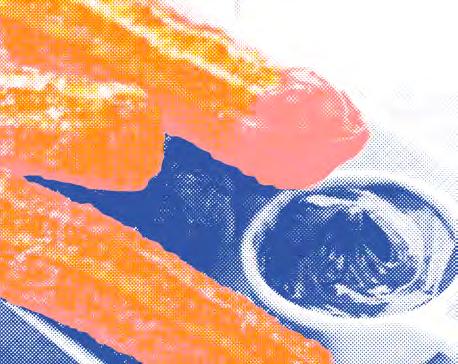

Someone who switches sides or opinions several times, often for convenience.

41 – [To speak with a potato in the mouth] – To imitate the way of speaking of Bogota’s upper class people.
Hablar con la papa en la boca

43 – [Don’t eat story] – Not believing something without ensuring it is true.
No comer cuento

42 – [Eaten bread] – Describes something that is very easy to do or accomplish.
Pan comido
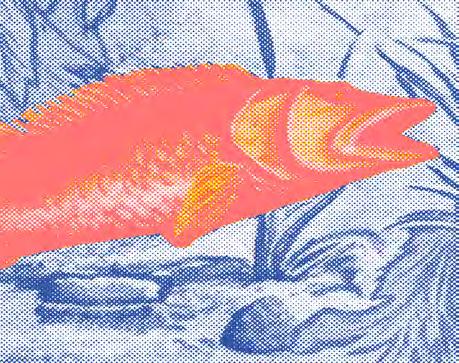
44 – [The fish dies by its mouth] – To speak more than necessary either exposes themselves or gets into trouble due to their indiscretion.
El pez muere por su boca

45 – [To sweeten someone’s ear] – To flatter or speak in a pleasing manner to someone, usually with the intention of gaining favor or manipulating them

47 – [To be in the pot] - To be in the midst of a difficult situation, mainly poverty.
Estar
la olla

46 – [Sugar cube] – A cute person, particularly when referring to a child.
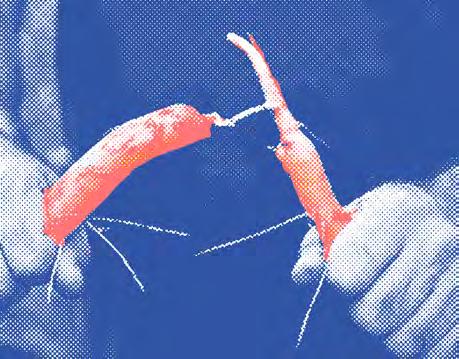
– [Get rid of


– [Go as a duck] – Travel in the passenger seat.
49 – [To be like a mushroom] – To feel out of place, alone or to be as lonely as a cloud.
Estar como un hongo

51 – [For the one who doesn’t want soup, three cups are served] – Refusing something initially may lead to an even greater quantity or intensity of it later on.
Al que no quiere caldo se le dan tres tazas

52 – [There’s no room even for a coffee] –When a place is so crowded that not even a cup of coffee can make it in.
No le cabe ni un tinto
Alzate Yepes, T. (2009) ‘RASTREANDO Entre dichos y refranes... transitan alimentos y comidas, los licores y los panes’, Perspectivas En Nutrición Humana, 11(2), pp. 213–216. doi:10.17533/udea.penh.
Arango, D. (2016) La Historia de la chocolatina jet, Producto Que No Pasa de Moda, Portafolio.co. Available at: https://www.portafolio.co/ negocios/empresas/chocolatina-jet-historia-de-un-negocio-que-nocambia-501307 (Accessed: 06 May 2024).
Díaz, R.J. (2018) Las Populares Gráficas Molinari: Versión, subversión Y perversión de las imágenes. Bogotá, Cundinamarca: Ministerio de Cultura.
GraficasMolinari (no date) Archivo, GraficasMolinari. Available at: https://graficasmolinari.com/archivo (Accessed: 08 May 2024).
Hozzman, E. (2012) Sólo para Mayores de 40 Años: La época de los cocacolos, camajanes y pandillas., Verbien magazin. Available at: https://verbienmagazin.com/solo-para-mayores-de-40-anos-la-epocade-los-cocacolos-camajanes-y-pandillas/ (Accessed: 29 April 2024).
Las Populares Gráficas Molinari (2022) Museo La Tertulia. Available at: https://museolatertulia.com/las-populares-graficas-molinari/ (Accessed: 21 April 2024).
Nacional de Chocolates (2019) Evolución del álbum de chocolatinas jet, Chocolates JET. Available at: https://chocolatesjet.com/historia/ evolucion-del-album-de-chocolatinas-jet/ (Accessed: 08 May 2024).
Ospina, A. (2012) Bogotalogo: Usos, Desusos y Abusos del Español Hablado en Bogotá. Available at: https://centrodocumentacion. idpc.gov.co/opac-tmpl/cendoc/apariencia%20cendoc/site/images/ descargas/bogotalogotomoII.pdf (Accessed: 22 April 2024).
This album explores the intricate relationship between vernacular language, local culture, and bilingualism, aiming to question the agency of graphic communication design in the mobility of language across cultures.

Este album explora la intrincada relación entre el lenguaje vernáculo, la cultura local y el bilingüismo, con el objetivo de cuestionar la agencia del diseño de comunicación gráfica en la movilidad del lenguaje entre culturas.